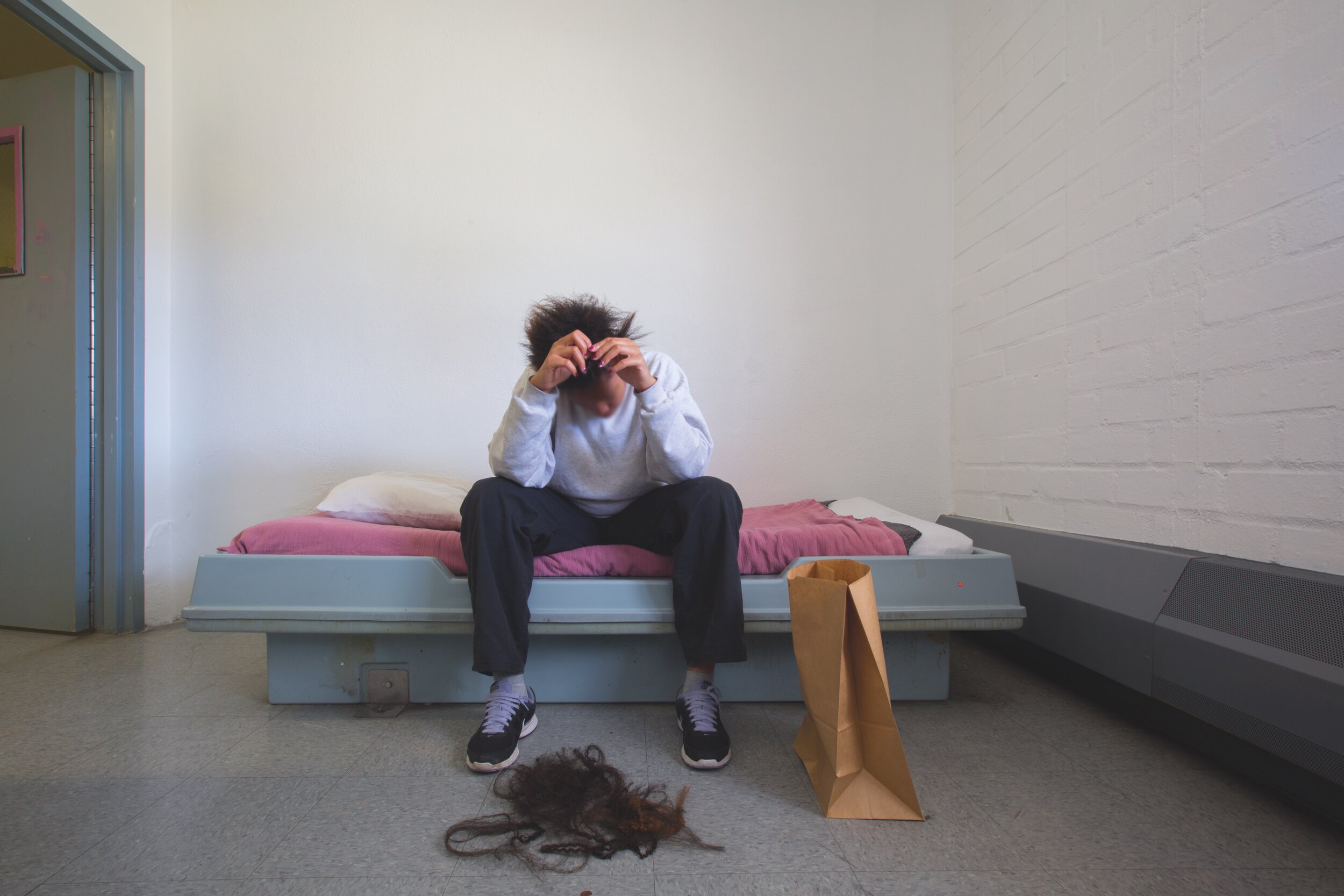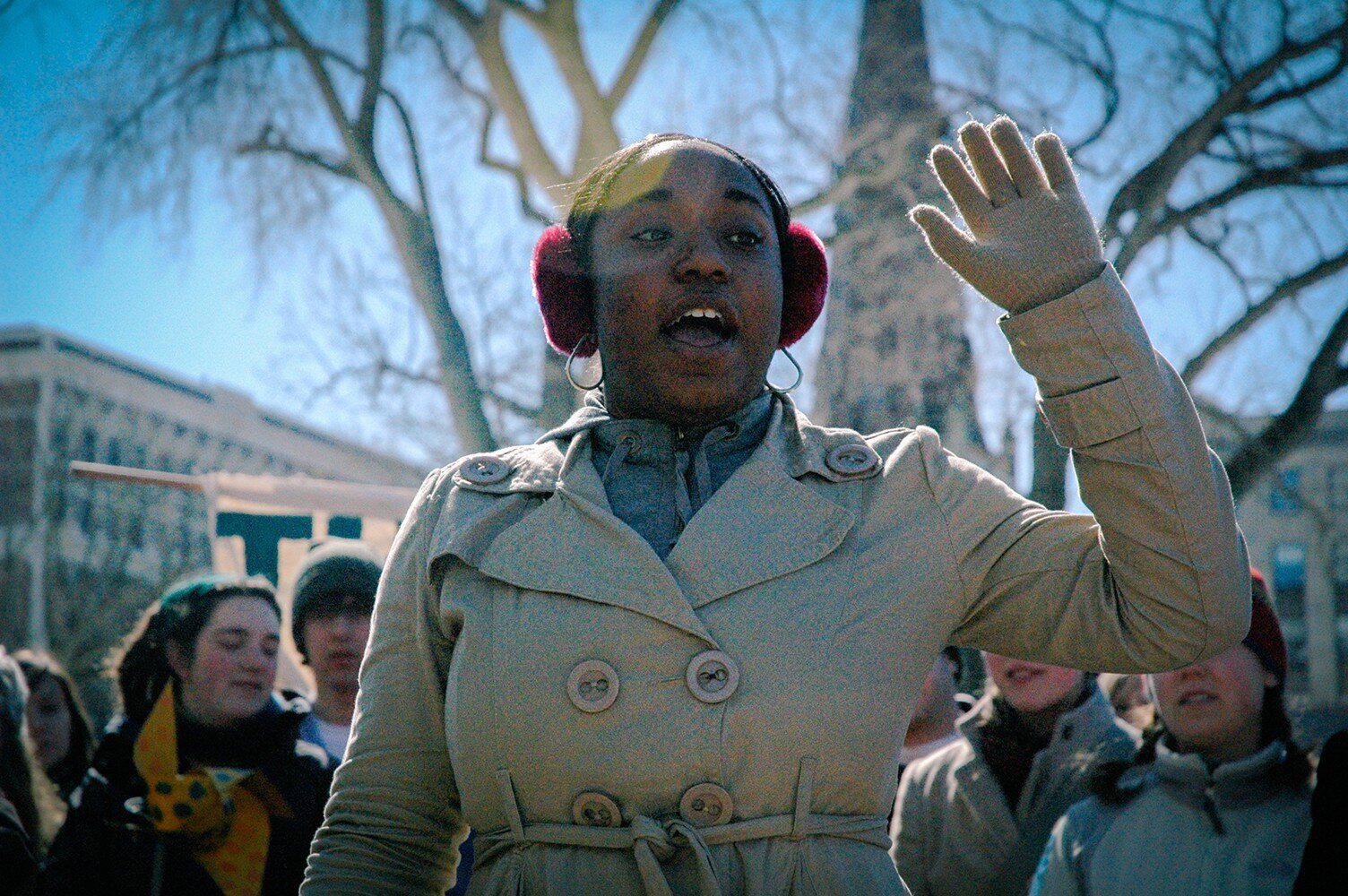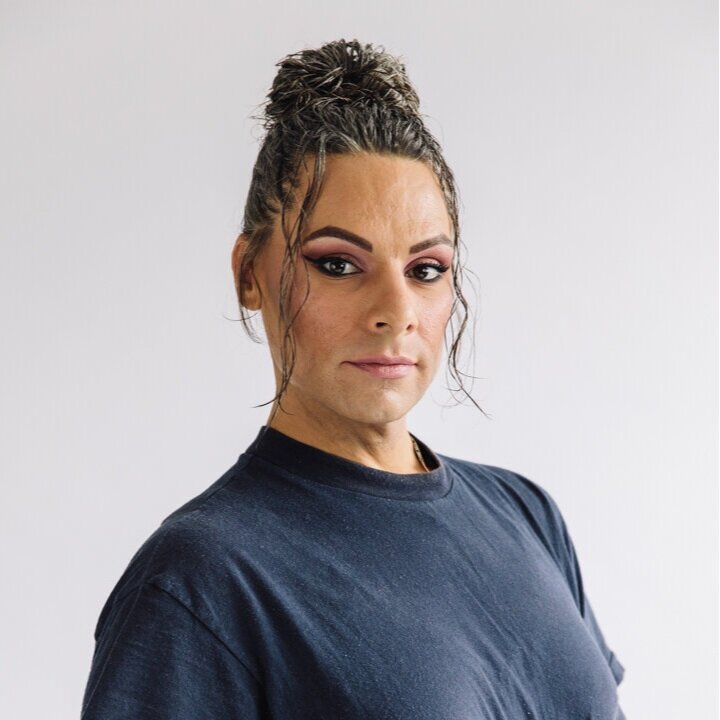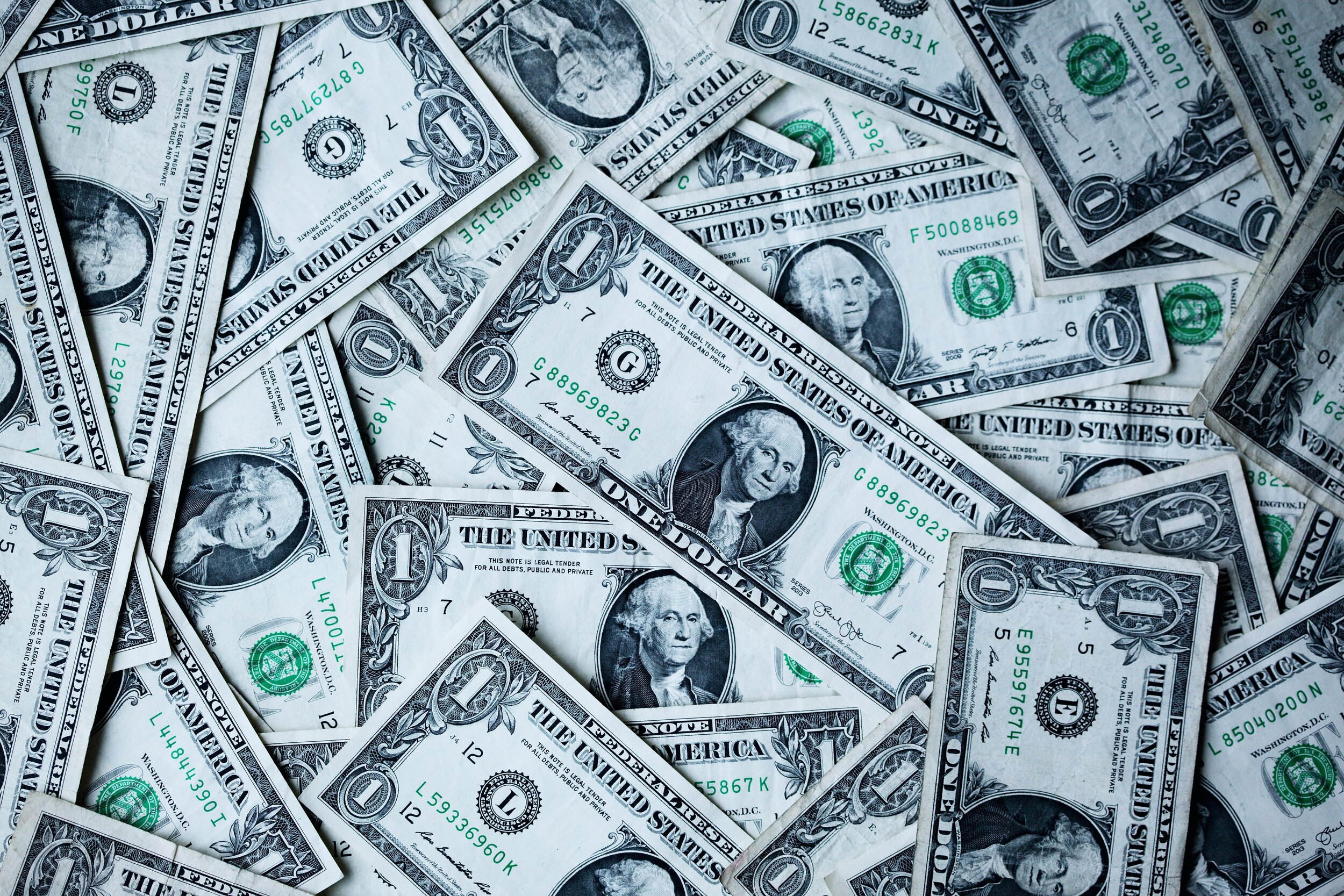Boston Police watch over the Liberty Bell circa 1903. Library of Congress / Getty Images
HOW MASS INCARCERATION HAPPENED: A BRIEF HISTORY
By Reiko Hillyer
The United States incarcerates more people, and at higher rates, than any other nation in the world. And yet, as activist and academic Angela Davis has observed, prisons have long been invisible in US society. One of the most powerful forces that accounts for the growth of mass incarceration is the very fact that it has come to be perceived as natural, permanent and inevitable. That we take prisons for granted is the first obstacle to their destruction. As such, we must understand the historicity of the prison—that is, its historical roots and motives, in order to understand how mass incarceration came to be seen as common sense.
Prison is a modern invention. Incarceration on a mass scale, out of proportion to crime rates and public safety, is even more recent. In the colonial period, those who transgressed social expectations and committed crimes were punished as they had been in pre-modern Europe and elsewhere: with physical pain, often in public, or banishment from the community. Being held in confinement was not itself a mechanism of punishment. A chronic need for labor and a belief in the inherent sinfulness of human beings made it unreasonable and untenable to disable community members for a significant length of time. The purpose of punishment was not to reform or contain, but to frighten people into lawful behavior.
However, as American society changed, so too did methods and purposes of punishment. By the early nineteenth century, with urbanization and industrialization and a corresponding erosion of community ties, public shaming would have less force. As wage-earning replaced subsistence farming, class inequality grew, and elites feared the increase in property crimes and social unrest. At the same time, the American Revolution and the influence of the Enlightenment introduced the belief that citizens could be reformed and perfected. However, the very fragility of the democratic experiment led Americans to believe that an undisciplined, anonymous populace needed to be controlled in order for democracy to succeed. Historian David Rothman poses the conundrum this way:
In the 1820s and 1830s, when democratic principles were receiving their most enthusiastic endorsement …incarceration became the central feature of criminal justice. At the very moment that Americans began to pride themselves on the openness of their society, when the boundless frontier became the symbol of opportunity and equality, an idea developed: those convicted of crimes would be confined behind prison walls, in single cells, and would follow rigid and unyielding routines. As principles of freedom became more celebrated in the outside society, notions of total isolation, unquestioned obedience, and severe discipline became the hallmarks of captive society.
Why would this be? How did captivity come to be essential to a free society? Historians have argued that the very freedom and fluidity of American society required a form of control and containment that could guarantee discipline and order. Furthermore, only in a society that regarded individual rights as sacred could a loss of rights be considered an adequate punishment; to quote Angela Davis, “If the individual was not perceived as possessing inalienable rights and liberties, then the alienation of those rights and liberties by removal from society to a space tyrannically governed by the state would not have made sense.” In other words, freedom and incarceration were born as conjoined twins.
Thus, the penitentiary emerged as a benevolent alternative to public and corporeal punishment, while at the same time its mission was conformity and compliance. These early prisons, such as the Eastern State Penitentiary in Pennsylvania and Auburn in New York, were premised on the faith that human behavior could be improved and regulated. Whether through hard labor or Bible study, these prisons required penitence from prisoners—that is, conditions that would cultivate self-reflection and training in Christian morality, submission and discipline.
“Prisons were born out of a need to control and terrorize a newly emancipated and enfranchised labor force”
Prisons in the American South developed on a different trajectory. In the aftermath of emancipation, planters and employers sought new ways to control recently freed slaves, disfranchise them, and extract their labor. Southern legislatures adopted new penal codes criminalizing vagrancy, selling liquor, and “mischief” in order to ensnare free people of African descent in a new criminal justice system. As prisons were born out of a need to control and terrorize a newly emancipated and enfranchised labor force, they quickly became filled with Americans of African descent. Guided by the belief that Black Americans were neither worthy nor capable of moral rehabilitation, prisons in the South were essentially labor camps ensuring economic production and guaranteeing white supremacy. Indeed, one Mississippi official declared, “Emancipation…will require a system of prisons.”
However, It was not until after the civil rights movement and the accompanying social unrest of the 1950s, 60s, and 70s, that the number of prisons began to grow exponentially. Thus, we should distinguish between the birth of the prison as an institution and the growth of mass incarceration.
In the 1960s, conservatives throughout the United States began to equate non-violent civil disobedience with lawlessness, protest with criminal activity. Thus began the language of “law and order,” championed by Barry Goldwater and Richard Nixon: a fear-mongering rhetoric that blamed the gains of the civil rights movement and the growth of liberal social welfare programs for a rise in crime. As expressions of overt racism fell out of favor, they were replaced with the supposedly neutral language of “crime in the streets,” private property, and states’ rights, reinforcing the notion that a growth in prisons was a commonsense response to social turmoil. Conservative politicians repudiated the rehabilitative ideal that had governed prisons and social welfare programs and championed strategies of containment in ways that disproportionately targeted people of color.
But liberals also contributed to the growth of mass incarceration. Political scientist Naomi Murakawa has demonstrated that liberal goals to end racist violence against African Americans coincided with conservative visions of a carceral state. Liberals perceived racism in the criminal justice system itself, seeking to remedy both the under-punishment of racist terrorism and the criminalization of Black people. At the same time, they explained crime committed by Black people as the result of the damage done by racism; in other words, racism caused Black resentment and damaged psyches, leading Black people to commit crime. In an effort to undo the historic racism of the criminal justice system, liberals hoped to standardize and professionalize punishment, leading them to endorse policies—such as reducing the exercise of discretion in sentencing—that led to the growth of the carceral state.
“The War on Drugs…disproportionately affected people of color, particularly Black Americans”
Also, in the 1980s and 1990s, conservative policies rolling back the welfare state coincided with an effort by many major US cities, in the aftermath of deindustrialization and economic crisis, to remake themselves as corporate capitals that could attract investment and wealthy residents—think of the ‘broken-windows’ policing in cities such as New York that aggressively prosecuted low-level, non-violent crime in the hope that it would prevent more serious crimes. Such practices led to the over-policing and incarceration of the working poor, the mentally ill, the houseless, and people of color. “Tough on crime” became a requirement for electoral victory. In 1994, Bill Clinton would sign a crime bill that would include funding for prison construction, an expansion of the federal death penalty, mandatory minimum sentencing, and “truth in sentencing” incentives to encourage states to adopt harsh punishments, limit parole and support the growing number and power of prosecutors. All while crime was on the decline.
The War on Drugs, first declared by Richard Nixon, expanded by Ronald Reagan, and continued by Bill Clinton, in a campaign that many readers will be familiar, especially thanks to the work of Michelle Alexander. This war, supported vigorously by both political parties, led to draconian penalties that rapidly increased the prison population and disproportionately affected people of color, particularly Black Americans. But it is also important to point out that even if all drug offenders were released today, the United States would still have the highest incarceration rate in the world.
Understanding the history of prisons reveals that its birth and growth were neither natural nor inevitable. Mass incarceration, as with any historical phenomenon, is the result of human decisions. When Frederick Douglass was struck by the revelation that slavery was not the natural condition of people of African descent, he wrote that it was “not color, but crime” that had caused racial slavery in the United States, and, thus, it was “not God, but man” who had made it so. And, so, Douglass concluded, “What men can make, men can unmake.” If we understand historical contingency—that is, how, why, and by whom and for whom the prison was made, then we can better unmake it if we so desire.
Reiko Hillyer is currently Associate Professor of History at Lewis & Clark College, OR. She got her B.A. at Yale University and Ph.D. at Columbia University. A social and cultural historian of the U.S. in the 19th and 20th centuries, she specializes in the American South, African America history, and the history of public memory.
——
Recommended Readings:
Michelle Alexander, The New Jim Crow: Mass Incarceration in the Age of Colorblindness (2012)
Michael Flamm, Law and Order: Street Crime, Civil Unrest, and the Crisis of Liberalism in the 1960s (2007)
Marie Gottschalk, Caught: The Prison State and the Lockdown of American Politics (2015)
Elizabeth Hinton, From the War on Poverty to the War on Crime (2016)
Julilly Kohler-Housmann, Getting Tough: Welfare and Imprisonment in 1970s America (2017)
Norval Morris and David J. Rothman, eds., The Oxford History of the Prison: The Practice of Punishment in Western Society (1998)
Khalil Gibran Muhammad, The Condemnation of Blackness: Race, Crime, and the Making of Modern Urban America (2011)
Naomi Murakawa, The First Civil Right: How Liberals Built Prison America (2014)
David Oshinsky, Worse than Slavery: Parchman Farm and the Ordeal of Jim Crow Justice (1996)




